
Introduction to Grade 1 Energy Label
What is the grade 1 energy label?
The grade 1 energy label refers to the electrical appliance or product with the highest energy efficiency on the market. The Hong Kong Electrical and Mechanical Engineering Office has implemented a voluntary energy efficiency labeling program for household appliances, office equipment and automobiles since 1995. The purpose is to encourage manufacturers to launch products with better energy-saving effects. products to meet consumer demand for energy-saving appliances or equipment, and the plan will be implemented until November 2009, when the energy labeling plan becomes mandatory:
- Prescribed products supplied by product manufacturers or importers must have listed models that have been assigned a reference number by the Electrical and Mechanical Services Department in their name and must be accompanied by an energy label that meets the specified specifications.
- Prescribed products supplied by persons other than the manufacturer or importer of the prescribed product (such as retailers or wholesalers) are also required to have a listed model assigned a reference number and must bear an energy label.
Energy Labeling Scheme Categories
Energy labels are divided into level-type and confirmation-type. Grade 1 energy label certification will only appear in the level-type energy label scheme. The following types of electrical appliances and products generally use level-type energy labels:Appliances applying graded energy labels:
Electric clothes dryer, household refrigeration appliance, air conditioner, washing machine, dehumidifier, household water storage electric water heater, TV
LED light induction cooker
After the implementation of the latest energy labeling scheme, it is estimated that it will help consumers save about 600 million kilowatt-hours of electricity per year, which means saving about HK$600 million in electricity bills every year, which is equivalent to reducing 440,000 metric tons of carbon emissions.
Energy saving benefits of the grade 1 energy label:
What is the difference in energy savings between electrical appliances using grade 1 energy labels and grade 3 and grade 5?
Air conditioner (cooling function)
23% (compared to grade 3 energy label)
43% (compared to grade 5 Energy Label)
Air conditioner (heating function)
18% (compared to gradel 3 energy label)
37% (compared to grade Energy Label)
Freezers (refrigerators)
41% (compared to Level 3 energy label)
97% (compared to Level 5 Energy Label)
compact fluorescent lamp
28% (compared to grade 3 Energy Label)
57% (compared to grade 5 Energy Label)
washing machine
23% (compared to grade 3 energy label)
48% (compared to grade 5 Energy Label)
dehumidifier
28% (compared to grade 3 Energy Label)
57% (compared to grade 5 Energy Label)
TV set
77% (compared to grade 3 Energy Label)
177% (compared to grade 5 Energy Label)
Water storage electric water heater
30% (compared to grade 3 Energy Label)
60% (compared to grade 5 Energy Label)
induction cooker
4% (compared to grade 3 energy label)
7% (compared to grade 5 Energy Label)
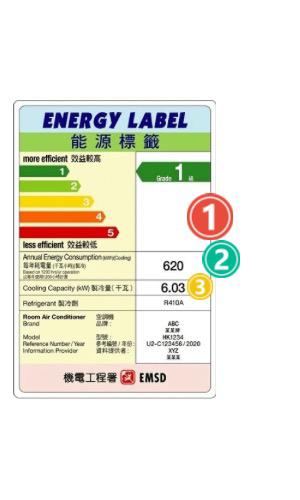
Energy Efficiency Label
1. The first item is the energy efficiency level
The energy efficiency level is divided into levels one to five, with level one having the highest energy efficiency.
2. The second item is the annual electricity consumption . The unit is kilowatt hours. 1 kilowatt hour is equivalent to 1 kilowatt hour of electricity consumption in the electricity bill. Calculated based on the testing standards of the Electrical and Mechanical Services Department, 1 kilowatt hour of electricity is about HKD$1.2- $1.5.
3. In the third item, different types of electrical appliances will have different displays. For air conditioners, for example, the cooling capacity (kilowatt) is used as the unit. One kilowatt (KW) is approximately equivalent to 3412 BTU/h. BTU is the British commercial unit of heat energy:
9,000 BTU equal to 1 HP, 2,637 watts (2.6 kilowatts) is 1 HP.
Square footage and recommended number of air conditioners
50 to 70 feet 3/4 HP
80 to 100 feet 1 HP
110 to 150 feet 1.5 HP
160 to 200 feet 2 HP
210 to 250 feet 2.5 HP
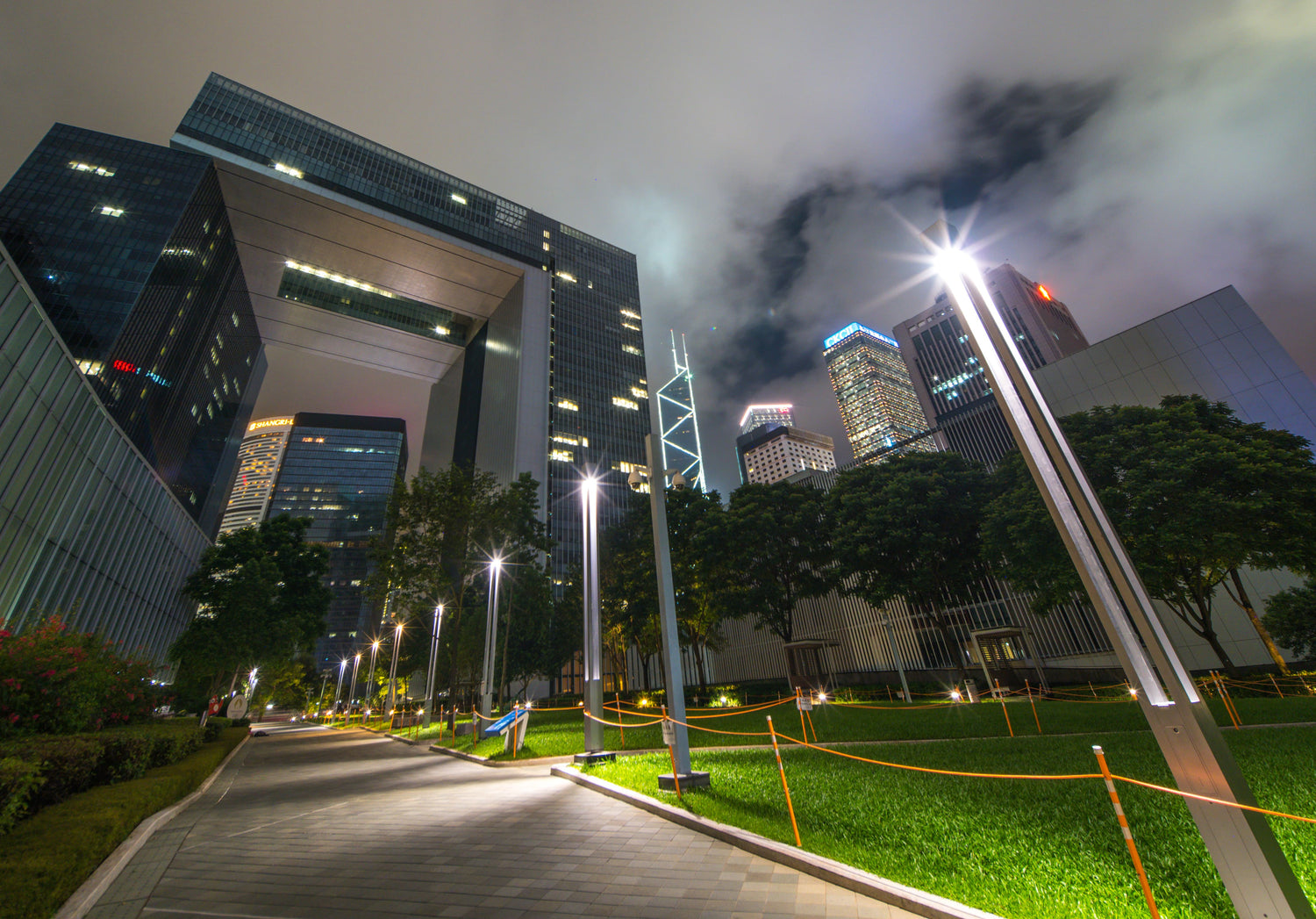
HKEA Audit Team Qualifications:
1. More than 13 years of experience in the field of sustainable development, focusing on energy performance optimization.
2. Possess the qualification of Registered Energy Assessor (REA) and have rich background in building services engineering.
3. Expertise in implementing and optimizing energy efficiency measures in building systems.
4. Chartered Engineer with extensive technical and practical knowledge.
5. Member of the Hong Kong Green Building Council (HKGBC) committee, contributing to industry standards and practices.
6. Guest lecturer at the Chinese University of Hong Kong (CUHK) and the University of Hong Kong (HKU) to cultivate future industry leaders.
7. Actively participate in public speaking and present at industry seminars.
8. Published many papers and articles on sustainable development.
9. Proven track record of leading successful sustainability projects and achieving significant energy savings.
10. Passionate about driving innovation and continuous improvement in the field of sustainable development.
Blog
View all-
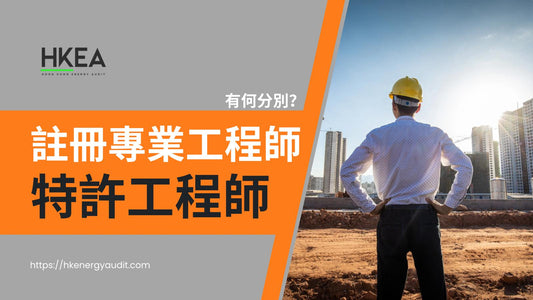
【甚麼是註冊專業工程師?與特許工程師有甚麼分別?】
註冊專業工程師(Registered Professional Engineer, R.P.E) 身份資格由香港工程師註冊局根據《工程師註冊條例》頒發,代表該工程師透過嚴格審核,並具備專業知識、經驗,並獲得香港政府認可,可以執行與安全、技術有關的工程項目及簽署相關文件;特許工程師(Chartered Engineer) 身份資格由工程學會頌發,同時亦可晉身該工程學會會員,或透過互認獲取更多不同學會的會員身份,特許工程師同樣是一種專業認可,包括該工程師在工程技術、管理能力同職業操守方面等,而且可以擔任高級技術或管理職位,特許工程師的國際認可性高,兩者有甚麼分別?
【甚麼是註冊專業工程師?與特許工程師有甚麼分別?】
註冊專業工程師(Registered Professional Engineer, R.P.E) 身份資格由香港工程師註冊局根據《工程師註冊條例》頒發,代表該工程師透過嚴格審核,並具備專業知識、經驗,並獲得香港政府認可,可以執行與安全、技術有關的工程項目及簽署相關文件;特許工程師(Chartered Engineer) 身份資格由工程學會頌發,同時亦可晉身該工程學會會員,或透過互認獲取更多不同學會的會員身份,特許工程師同樣是一種專業認可,包括該工程師在工程技術、管理能力同職業操守方面等,而且可以擔任高級技術或管理職位,特許工程師的國際認可性高,兩者有甚麼分別?
-
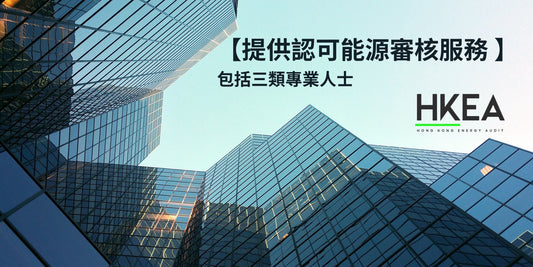
Three types of professionals provide accredited...
The "Buildings Energy Efficiency (Amendment) Bill 2025" passed its third reading in the Legislative Council in 2025. The revised Buildings Energy Efficiency Ordinance has several key features, including the inclusion...
Three types of professionals provide accredited...
The "Buildings Energy Efficiency (Amendment) Bill 2025" passed its third reading in the Legislative Council in 2025. The revised Buildings Energy Efficiency Ordinance has several key features, including the inclusion...
-
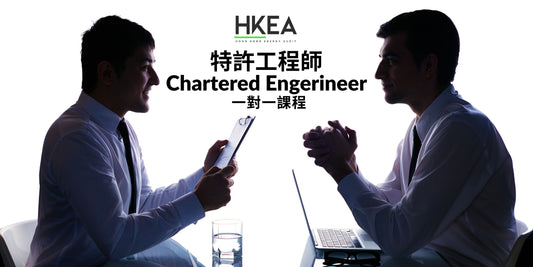
[Chartered Engineer One-on-One Course]
Most high-tech and management-level engineering positions in Hong Kong, or those requiring independent design, project leadership, and innovative solutions, typically require applicants to hold a Chartered Engineer (CE) qualification. HKEA...
[Chartered Engineer One-on-One Course]
Most high-tech and management-level engineering positions in Hong Kong, or those requiring independent design, project leadership, and innovative solutions, typically require applicants to hold a Chartered Engineer (CE) qualification. HKEA...



